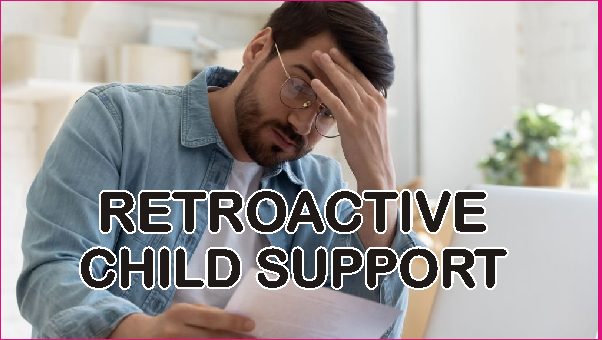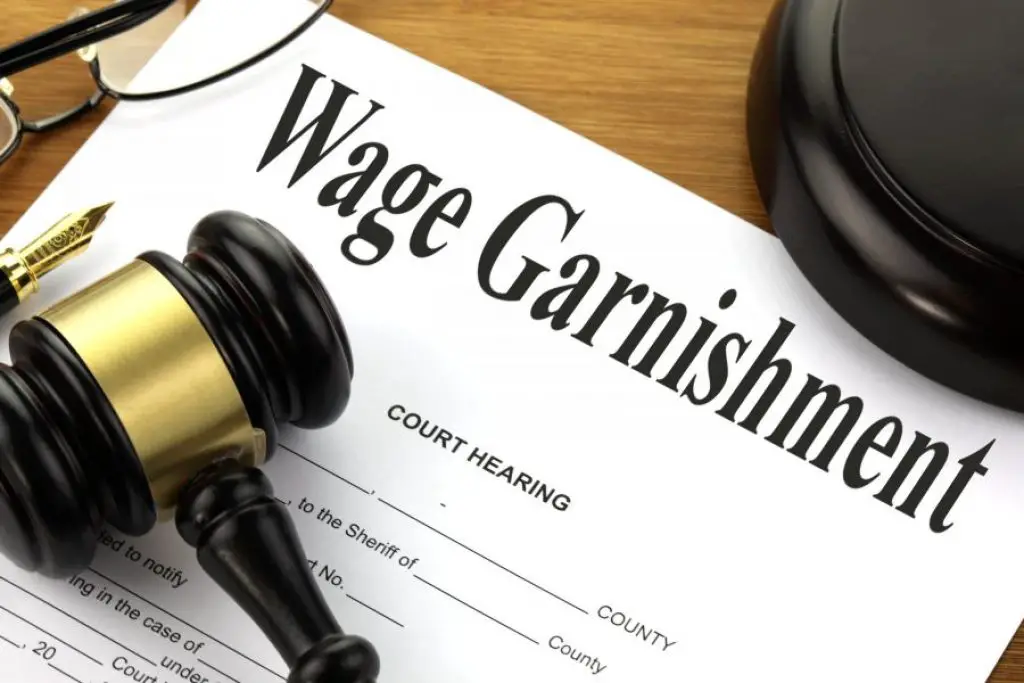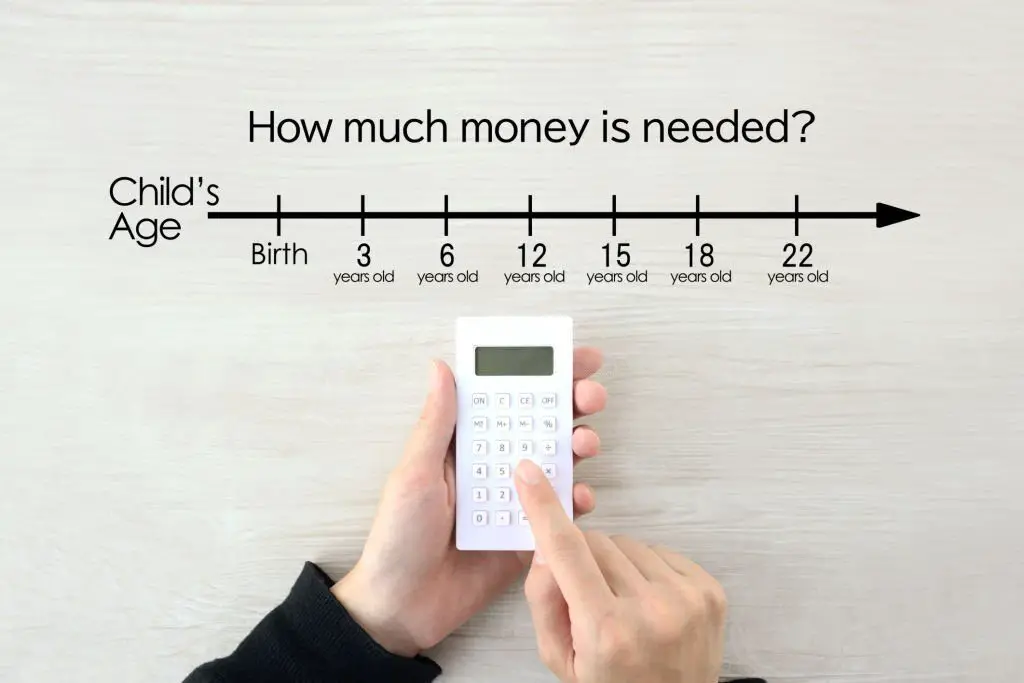
After a child support hearing, a judge will sign an order compelling the non-custodial parent to pay the parent with custody for childcare-related costs. These costs are referred to as “child support payments,” and each state has a different method for calculating how much has to be paid.
The judge typically directs payments to be made prospectively under a child support judgment. This implies that after the order is signed, the duty to pay “kicks in.” A judge may in rare cases demand that retroactive payments be paid.
In this article, we will take a deep dive into everything about retroactive child support, arrears, and back pay.
What is Retroactive Child Support?
Retroactive child support is expenditure incurred for a duration of time before the child maintenance order went into effect. thIn other words, these are sums of money that the non-custodial parent might be required to pay towards the upkeep of their child, but a court has not yet mandated that they do so.
A circumstance where the Court mandates that child support must be paid starting from the date of separation, even though the official order may not have been issued for a few weeks or months, is an example of this type of order. It may also be necessary for the non-custodial parent to pay for the mother’s uninsured prenatal or postnatal costs.
Difference Between Arrears, Retroactive, and Back Child Support
 The main difference between them is that child support arrears are the amount owed after the judge enters a child support order; while retroactive child support is payments the non-custodial parent is supposed to make for the child’s upkeep, but has not done that yet and is not in default of any laws since there is no court order to that effect.
The main difference between them is that child support arrears are the amount owed after the judge enters a child support order; while retroactive child support is payments the non-custodial parent is supposed to make for the child’s upkeep, but has not done that yet and is not in default of any laws since there is no court order to that effect.
It is possible for parents to agree on child support, or a court may order it to be paid moving forward, typically once each month. In most cases, however, retroactive payment agreements are reached between parents or with independent negotiators, hence the likelihood why deadbeat parents flout them.
Who Receives Retroactive Support?
Three people/entities are the possible recipients of retroactive child support based on the custody arrangement in practice and the final judgment. That is:
- The custodial parent is entitled to retroactive support
- A caregiver with custody rights
- The state, if a parent was legally required to provide for the child while the custodial parent was receiving public assistance (benefits). In a way, the child support payment, if it is mandated, reimburses the State for the money used to provide public assistance to the custodial parent.
How to Get Back Child Support
Retroactive child support or arrears payments may be agreed upon by the spouses or imposed by the court in a divorce judgment or legal separation agreement. Thanks to a number of laws, back payment orders are easily enforceable across the country.
But in spite of these initiatives, “deadbeat parents,” who regularly fail to pay their obligations in full or at all, perpetuate their delinquencies. Therefore, additional measures are possible for the collection of such back child support obligations:
- Withholding and/or Garnishment of Wage
- Withholding Other Income Sources
- Tax Refunds Interception
- Placing Liens on Property
- Revocation of Licenses
- Bank Accounts Freezing
- Interstate Enforcement using UIFSA
- Using Child Support Enforcement Agencies
- Using Debt Collection Agencies and
- Contempt of Court Processes
-
Wage Withholding and/or Garnishment

Wage can be garnished to pay retroactive child support
All states allow for the receipt of court rulings ordering wage garnishment for unpaid child support. If the paying parent does not regularly change jobs and/or lose their job, this process of collecting past-due support payments is effective.
-
Withholding Other Income Sources
State authorities may also withhold funds other than typical income to cover outstanding child support. Additionally, the state agency has the authority to direct payment withholding for any of the following:
– commissions earned
– employer incentives
– pension advantages
– retirement savings
– remuneration for employees
– disability compensation
– benefits for veterans, and
– military salary
-
Intercepting Tax Refunds
State and federal governments are also allowed to confiscate a delinquent parent’s expected sizable tax refund in order to collect back child support payments.
-
Placing Liens on Property
States have the authority to issue liens on the real estate and vehicles owned by defaulting parents. A “lien” is a claim made on property that restricts the sale or transfer of the asset until a debt (such as child support payments) has been paid in full. If the obligation is not paid, the property may be “foreclosed,” or sold, with the revenues going toward the obligation.
-
License Revocation
Making the debtor’s obtaining or renewal of a license dependent upon paying the support due is another way to enforce child support payments. Driver’s licenses, professional licenses, etc. may be affected by this. A license holder may also have their license canceled if they go into default or fail to fulfill the agreed-upon payments.
These procedures have the advantage of being speedy and efficient because they are administrative in nature, even though they might not be available in all states.
-
Freezing of Bank Accounts

Your bank account can be frozen to enforce payment of back pay support
In some states, child support agencies have the authority to block an obligor’s accounts at specific financial firms (such as banks, credit unions, and insurance companies). The obligor is then prohibited from using the account until the debt is settled.
In some places, the financial institution can take the amount owed from the debtor’s account and transfer it straight to the child support agency once the account has been frozen for a certain amount of time (like 30 days) and the debtor still hasn’t paid it.
-
Interstate Enforcement using UIFSA
Every state is part of the Uniform Interstate Family Support Act (UIFSA) in place in order to enforce child support orders across state lines.
The UIFSA makes ensuring that state-to-state child support practices are uniform. UIFSA eliminates these obstacles when one spouse resides in another state and the local courts lack the authority to render judgment or impose decrees.
The Office of Child Support Enforcement may, however, be able to assist in obtaining the payments if the support payment needs to be enforced.
-
Using Child Support Enforcement Agencies (CSEAs)
The enforcement and collection of child upkeep obligations, including those imposed by orders made in another state court, is part of the responsibility of child support enforcement agencies (CSEAs), which exist in every state.
-
Using Debt Collection Agencies
Sometimes it may be necessary to work with a debt collection company to find the uncooperative child maintenance payer. Some collection agencies could be willing to use their standard collection techniques to handle the collection of child support just like any other debt. As “contingency fees” for their services, these organizations typically ask for a percentage of the money collected.
-
Contempt of Court Processes
If a parent doesn’t pay support, they could be found in “contempt of court.” The custodial parent or the state may file a contempt case against the non-custodial parent if they refuse to follow a court order to pay child support. A person who is found guilty of contempt of court could face fines and/or jail time.
Ordinarily, it may appear that the obligor is not statutorily mandated to pay retroactive child support since there is no court order yet to do so. Below is the full disclosure
Can I Sue for Back Child Support if There is No Court Order
Yes, depending on the state, you can sue to enforce retroactive child support payments in the family court if the payment of maintenance has never before been mandated and if he/she wasn’t involved in a lawsuit where support was required.
The court may require a parent to pay back child support, subject to an earlier decision, if:
1. the kid’s parents’ marriage or remarriage ended the previous obligation agreement;
2. the child’s parents divorced or remarried after their union; and
3. a fresh child support order is requested upon the separation date
Many parents might think that the only time they are accountable for child support is when a court order is in place. While it may be true that a parent cannot be ordered to pay kids’ maintenance without a court order, this does not mean that, once a court order is in place, the non-supporting parent may not be held accountable for the time they did not contribute.
When paternity is proven, certain state Family Codes do not require retroactive child support; rather, the trial judge must make a factual decision based on the relevant circumstances.
In their petition to the court, the inquiring parent may request both of the following while requesting child upkeep:
- Currently Paying Child Support
- Backpay for child support
Retroactive child support is not automatically granted, as you must explicitly ask the court for it when requesting other legal benefits.
How to File for Retroactive Support

Here are the steps to File for Retroactive Support
You can submit a petition to the family court in your state if you wish to get retroactive child support. The request must expressly demand payments of upkeep that are made retroactively for a certain period of time. The justifications for your need for back child support must also be given. In most cases, the process is as follows:
1. Obtain and complete the court forms.
2. Request the court’s family law facilitator to evaluate your forms.
3. Make at least two copies of every form (one for you and one for the other parent of your child).
4. Submit your paperwork to the court clerk.
5. Ask the court clerk for your court date.
6. Have someone older than 18 serve the other parent with your documents instead of you, and obtain proof of service.
7. Keep a copy of the person who served you’s proof of service.
8. Attend your court hearing armed with a copy of every document you’ve filed and your Proof of Service.
How is Retroactive Child Support Paid?
The non-custodial parent has the option of paying in one lump sum or through monthly installments when retroactive child support is ordered by the court. The court will work with both parents to develop a workable plan that takes into account their respective financial circumstances.
In addition to any ongoing monthly payments, back child support will also be provided. The amount of the court-ordered periodical payments are unaffected. The court may subtract that sum from the total amount due in retroactive payments if the non-custodial parent paid additional payments over that time span.
Where the parent is unable to meet up payment of either the past-due support plus ongoing support or just the support arrears owed, such parent, can apply for a modification or explore the arrears forgiveness program. It’s always a wise idea to first know your child support payment history to compare it with any retroactive claims.
Retroactive Modification of Child Support

Retroactive Modification of Child Support
In accordance with federal law, support arrearages may be modified retroactively at any time while a petition for modification is underway, but only as of the date notice of the petition was provided to the obligee or, in cases where the obligee is the petitioner, to the obligor.
Retroactive child support modification rules set forth by state laws govern when personal jurisdiction is obtained by the service of a notice of the action. According to these laws, the State should interpret the “date of notice” or “date notice is given” in the same way that it ordinarily is applied to start other civil proceedings inside the State.
When the amendment may take effect is determined by state legislation regarding the determination of the date of notification that a petition has been filed. If “notice is given” on the same date via publication or another method, and personal service is not required by State law, the notification date may be the same as the petition filing date.
Retroactive Support After 18
Even after the child reaches the age of 18, the liability for back child support remains. The payments that were due before the child turned 18 are still enforceable after that, even though he or she has attained the age of majority.
On this matter, keep in mind that state laws can differ slightly. For instance, some jurisdictions only allow retroactive child support payments for the previous three years, so a parent cannot request support going all the way back to the kid’s birth in those states. a different state.
After the age of 18, parents may also still be obligated to pay back child support in the following situations:
1. When the child has a disability that prevents them from finding work that would allow them to support themselves and keeps them dependent on their parents; or
2. Whether they are engaged in a full-time educational program. This indicates that the youngster has either enrolled in a full-time college or university degree or is still enrolled in high school after becoming 18 years old.
How is Retroactive Child Support Calculated

How Retroactive Child Support is Calculated
Using a special calculator, a judge will determine the amount of retroactive child support based on the income of both parents at the time of issue and the past financial commitments the noncustodial parent contributed to child care (whether or not the payments were ordered by a court).
The court views it as that paying the retroactive support should not constitute a burden to the non-custodial parent. Instead, it should be a sum that the parent can afford, depending on his or her income at the time the “failed” payments were to be made.
How Far Back Can Retroactive Child Support Go?
The longest amount of time that retroactive child support can be asked to go back is three years. However, if the payor engaged in behavior that deserves condemnation, such as withholding truthful facts about their earnings, this can be delayed even further.
Conclusion
While there are ways how to get child support arrears dismissed, it’s always important to know as much as you can regarding retroactive child support. You can also stop paying child support legally, but may also be petitioned for owing arrears, then you have to defend yourself. If at any time you get confused or need help, don’t fail to consult a lawyer or a family law attorney.




